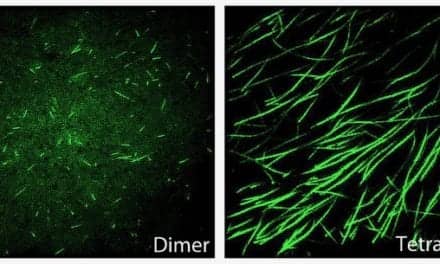Researchers from the University of Southern California (USC) Norris Comprehensive Cancer Center have demonstrated the potential of the Parsortix system by Angle plc, Surrey, UK, for use in performing liquid biopsies for metastatic breast cancer.
In a study of biomarkers for metastatic breast cancer, an analysis of circulating tumor cells (CTCs) harvested from a simple blood test using the Parsortix system was found to have a statistically significant correlation with a similar analysis of tissue obtained by invasive biopsy of a secondary cancer site.1 According to the researchers, the data suggest the potential for the simple blood test to replace the invasive biopsy.
Initial treatment recommendations for breast cancer are commonly based on the biology of the primary tumor, as revealed via a solid tissue biopsy at patient presentation. However, metastasis is responsible for the vast majority of deaths related to breast cancer. Recently updated guidelines from the American Society of Clinical Oncology call for biopsy of a metastatic site to guide the decisionmaking for treatment, as it is known that cancers change their status as disease progresses. But access to a secondary cancer site to obtain such a tissue biopsy can be challenging, and requires the patient to undergo another invasive procedure that may cause trauma and delay treatment.
In the USC study, tissue from an invasive biopsy and CTCs from the Parsortix liquid biopsy harvest were both subjected to whole-transcriptome analysis using total RNA sequencing (RNA-Seq). RNA-Seq can accurately measure gene and transcript abundance, and identify known and novel features of the transcriptome. This strategy enables measurement of thousands of genes at once in order to generate a comprehensive picture of cellular function.
For each of the eight patients enrolled in the USC study, the researchers performed RNA-Seq analysis on three sample types: metastatic tissue biopsy, Parsortix-harvested CTCs, and, as a control, peripheral blood. The analysis revealed a statistically significant correlation between the expression signature of 192 genes in the Parsortix-harvested CTCs with similar analysis of tissue obtained from an invasive biopsy of a secondary cancer site.
The metastatic biopsy material was sourced from a wide range of sites, including skin, pleural effusion, pericardial effusion, breast, cerebrospinal fluid, and bone tissue. For all of these metastatic sites, the Parsortix CTCs provided similar gene expression compared to the metastatic biopsy, allowing for the potential examination of known and novel genes related to breast cancer.
These results suggest that by using the Parsortix system, the same clinically relevant information may be obtained from a patient blood test as from an invasive metastatic biopsy, regardless of its location in the patient.
“As a breast cancer surgeon, I am very enthusiastic about the potential of liquid biopsy to gain information to guide the treatment of breast cancer patients based on the specific tumor biology for each patient,” says Julie E. Lang, MD, FACS, associate professor of surgery at the Norris Comprehensive Cancer Center and director of the USC breast cancer program. “Our pilot data show that potentially the same information can be obtained from a simple blood test using Parsortix as from an invasive tissue biopsy. Indeed, it may be advantageous over invasive tissue biopsies in regards to the diverse sites of metastatic disease, thus providing a compelling rationale for use in clinical practice after further validation.”
The study also compared overall gene expression using Parsortix-harvested CTCs and the metastatic biopsy for different druggable pathways. A total of 66 potentially clinically actionable genes were investigated; again there was no statistically significant difference in gene expression between CTCs and invasive tissue biopsy, covering nine unique pathways. According to the researchers, the Parsortix system has the potential to be a useful tool for identifying drug targets in metastatic breast cancer, and might be utilized to assess the effectiveness of drugs under development in clinical trials.
Angle intends to work with USC and other leading cancer centers to develop and implement clinical studies to validate use of the Parsortix system for routine biopsy of metastatic breast cancer patients. The multicenter clinical studies have yet to be specified but are expected to take at least 18 months.
“These are more highly encouraging results for the use of the Parsortix system, this time for an RNA-based clinical application in breast cancer to replace solid metastatic biopsy,” says Andrew Newland, founder and chief executive of Angle. “This opens the potential of another highly differentiated liquid biopsy application for Parsortix in a key area of medical need, which cannot be addressed by ctDNA, where there is the potential to improve patient care and at the same time reduce healthcare costs.”
REFERENCE
- Ring A, Forte V, Barrak D, et al. Molecular profiling of circulating tumor cells as a surrogate for distant metastasis in stage IV breast cancer [abstract]. Presented at the American Association for Cancer Research annual meeting (New Orleans: April 16–20, 2016).







